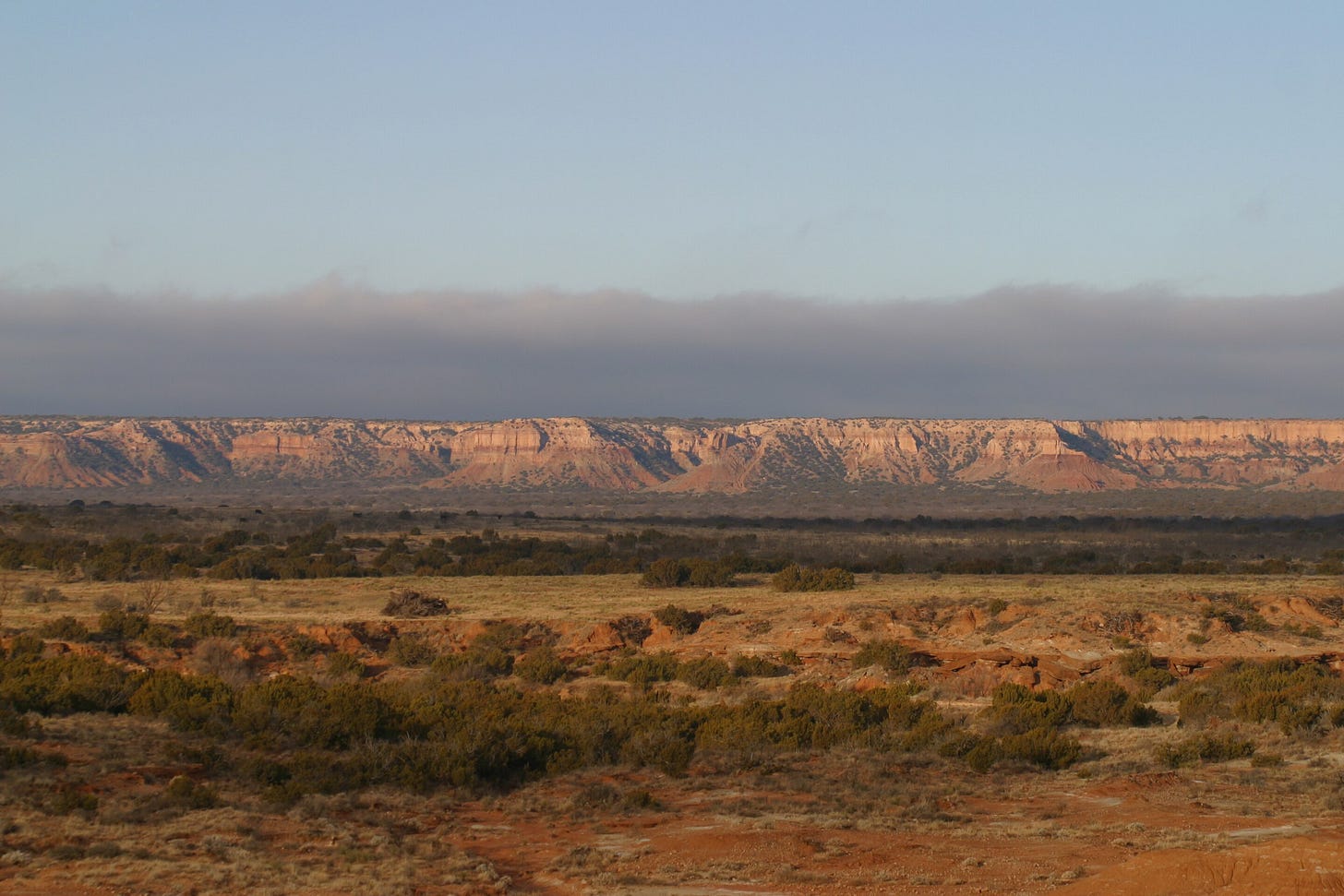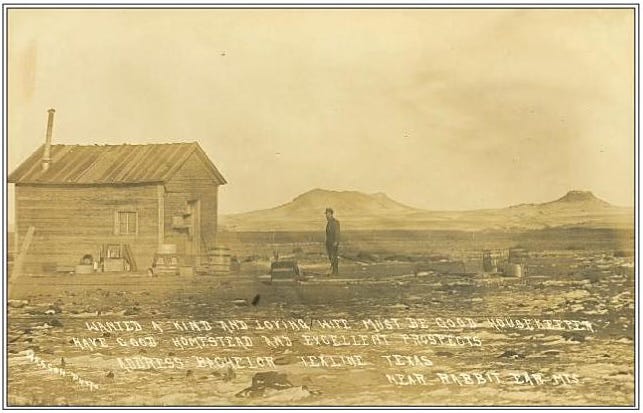Looking for Love on the Llano Estacado
A hearty bachelor advertises for a hearty wife
Y’allogy is 1836 percent pure bred, open range guide to the people, places, and past of the great Lone Star. Texan is spoken here. I’d be much obliged if you’d consider riding for the brand as a free or paid subscriber. (Annual subscribers of $50 receive, upon request, a special gift: an autographed copy of my literary western, Blood Touching Blood.)

Wanted: A kind and loving wife. –A Lonesome Bachelor
When Spanish explorer Francisco Vázquez de Coronado failed to find the fabled Seven Cities of Cibola, which turned out to be nothing more than a few villages of poor Zuní pueblos in western New Mexico, he set his face to finding the equally mythical gold- and silver-filled land of Quivira, far to the east, somewhere on the Buffalo Plains. To reach Quivira, he had to cross an enormous, featureless plain that makes up northeastern New Mexico and northwestern Texas. On October 20, 1541, Coronado wrote to the king of Spain:
I reached some plains so vast, that I did not find their limit anywhere I went, although I travelled over them for more than 300 leagues . . . with no more land marks than if we have been swallowed up by the sea. . . . There was not a stone, nor bit of rising ground, nor a tree, nor a shrub, nor anything to go by.
Coronado named this expansive region the llano estacado—the staked or palisaded plains.
Even today, though roads crisscross it and towns populate it, the vastness of the Llano Estacado produces a foreboding feeling of desolation and isolation—a loneliness that seeps into your bones. When Coronado and his men crossed it, the first Europeans to do so, the only inhabitants were boundless herds of buffalo and other natural creatures. Nomadic Plains Indians like the Comanche lived on and off of it depending on the migration of buffalo and other wild game. By the 1880s, after the Comanche had been defeated and deported to reservations in Indian Territory (now the state of Oklahoma), the population of the Llano Estacado was little more than a thousand souls, mostly white ranchers and farmers.
Cheap land in the west attracted many from the east. Most who arrived on the High Plains of Texas and New Mexico, however, were ill prepared for the utter remoteness of the place. Stories abound of folks going insane from the seclusion—and the ceaseless wind howling night and day like the wail of a baby refusing to be comforted.
Such hardships didn’t deter one hearty fellow from placing his stakes in the staked plains. Standing outside of the clabber board house he constructed on his homestead, this unnamed “Bachelor” was photographed in 1885 by Montie Wasson, who turned the image into a postcard. Perhaps at the insistence of the unidentified bachelor, Wasson included the following caption at the bottom: “Wanted a kind and loving wife. Must be good housekeeper. Have good homestead and excellent prospects. Address Bachelor, Texline, Texas, near Rabbit Ear Mts.”
Apparently, this hearty bachelor was advertising for an equally hearty wife.

Texline sits on the very edge of the Texas-New Mexico border, close to the northwest corner of the Panhandle. Even today, it’s an isolated hamlet in Dallam County with less than five hundred residents. But what makes Wasson’s photograph of the lonely bachelor intriguing isn’t Texline or the isolation of the Llano Estacado, it’s Rabbit Ear Mountains, which can be seen in the background. Those distinctive hills are nowhere near Texline, but are some thirty miles across the border, north of Clayton, New Mexico. So why didn’t the bachelor or Wesson list the address as Clayton? According to West Texas historian John Miller Morris, Wasson’s “image of the lonesome plains connected more deeply with customers and retail outlets in Texas. Accordingly, Wasson used the caption to indicate Texline as the locale. Later he added the town of Post (in distant Garza County) to the same image. The lonesome ‘batchelor’ [sic] of the High Plains sold better in Texas than New Mexico.”
Wasson may have made more money selling this postcard in Texas, but I wonder whether the unnamed homesteader ever found a wife.
✯✯✯
John Miller Morris, Taming the Land: The Lost Postcard Photographs of the Texas High Plains (College Station: Texas A&M University Press, 2009), 32.
✯✯✯
If y’all’d like to support the work of Y’allogy saddle up and ride for the brand by becoming a paid subscriber or purchasing my book. Much obliged, y’all.




Grew up in the Staked Plains.